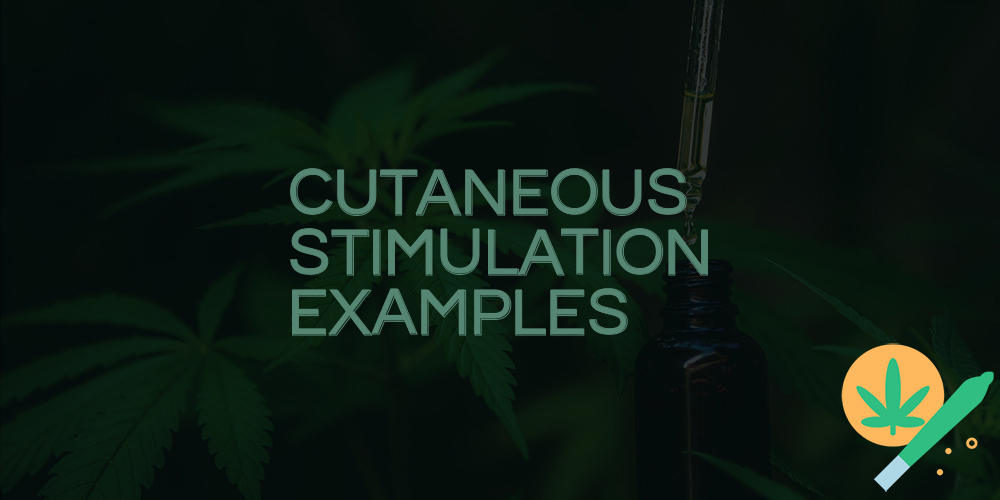In this essay, we will go over some of the most successful tactics that will be given to you We hope to present you with a new and fresh viewpoint on this topic, avoiding formulaic introductions and conclusions So, let’s get started and explore the fascinating realm of cutaneous stimulation techniques

Investigating the Science of Cutaneous Stimulation Techniques
For millennia, cutaneous stimulation techniques have been utilized to promote healing, relaxation, and overall well-being. These methods involve applying pressure, heat, or other forms of stimulation to the skin in order to elicit a therapeutic response. While many people have firsthand experience with the benefits of these strategies, the science underpinning their effectiveness is still being researched.
The activation of the body’s nerve system is one of the fundamental processes by which cutaneous stimulation treatments work. When pressure or heat is applied to the skin, mechanoreceptors, which are specialized nerve endings, are triggered. These mechanoreceptors transmit signals to the brain, which produces neurotransmitters and endorphins, facilitating relaxation and pain alleviation. Furthermore, stimulating mechanoreceptors can increase blood circulation and lymphatic flow, assisting in the supply of nutrients and the elimination of waste products from tissues.
According to research, cutaneous stimulation techniques can have a good effect on the autonomic nervous system, which controls many involuntary biological activities. Certain therapies, such as massage or acupuncture, for example, have been shown in tests to reduce heart rate and blood pressure, as well as levels of stress chemicals such as cortisol. These effects are thought to be mediated by parasympathetic nervous system activation, which counteracts the fight or flight response and promotes rest and healing.
The Secrets of Top Cutaneous Stimulation Methods
When it comes to maximizing the potential of the human body’s natural healing capacities, cutaneous stimulation methods have proven to be a potent and successful tool. These approaches, which range from ancient practices like acupuncture to modern ones like transcutaneous electrical nerve stimulation (TENS), function by activating the body’s nerve endings, resulting in a cascade of physiological responses. Individuals can tap into a world of therapeutic benefits and boost general well-being by studying and implementing these top cutaneous stimulation methods.
Acupuncture, an old Chinese practice dating back thousands of years, is one of the most well-known cutaneous stimulation modalities. Acupuncture is a technique that involves inserting small needles into certain places on the body to stimulate nerves and promote the flow of energy, or qi. This approach has been demonstrated to help with pain relief, stress reduction, and even sleep quality. Acupuncture’s effectiveness has received significant scientific attention, leading to its incorporation into mainstream healthcare systems around the world.
Transcutaneous electrical nerve stimulation (TENS) is another notable cutaneous stimulation technology. This method employs the use of a tiny device that delivers low-voltage electrical currents to the skin using electrodes. TENS can effectively treat pain and promote muscle relaxation by targeting particular parts of the body. TENS has grown in popularity as a non-invasive treatment option for chronic pain diseases such as arthritis, fibromyalgia, and back pain. TENS has been a go-to therapy for many people seeking natural pain relief due to its ease of usage and low adverse effects.
Developing Effective Cutaneous Stimulation Techniques
Effective cutaneous stimulation techniques have long been acknowledged as an essential component of a wide range of therapeutic approaches. Massage therapy and acupuncture are examples of methods that try to stimulate the skin and underlying tissues in order to promote healing and well-being. However, learning the skill of good cutaneous stimulation entails more than just applying pressure or manipulating the skin. It necessitates a thorough understanding of the body’s physiology as well as the precise approaches that can uncover its benefits.
Effleurage is a method that involves lengthy, sweeping strokes used with soft pressure across the skin. This massage therapy technique is well-known for its ability to promote relaxation and increase blood circulation. Effleurage activates nerve endings and sensory receptors by gliding the hands over the skin, creating a cascade of physiological responses that can alleviate muscle tension, relieve pain, and improve general well-being.
Cupping is another efficient cutaneous stimulation technique that includes placing heated glass cups on the skin to induce suction. This practice has been employed in traditional Chinese medicine for millennia and is thought to help remove impurities, enhance blood flow, and relieve pain. The suction formed by the cups pulls the skin and underlying tissues upward, promoting blood and lymphatic fluid circulation. This, in turn, can promote healing, reduce inflammation, and restore physiological equilibrium.
Discovering Cutaneous Stimulation Methods to Improve Sensory Experience
We frequently neglect the power of our greatest organ – the skin – when it comes to boosting our sensory experience. The skin serves as both a protective barrier and a portal to the world around us. Cutaneous stimulation methods have lately gained popularity because to their capacity to improve sensory perception and overall well-being. We can open a whole new level of sensory experience by investigating these strategies.
Massage therapy is an excellent technique of cutaneous stimulation. Massage is the manipulation of soft tissues in the body, such as muscles and connective tissues, using various techniques. This tactile stimulation not only feels good, but it also causes the release of endorphins, the body’s natural painkillers and mood lifters. Massage has also been shown to relieve tension and anxiety, improve circulation, and improve sleep quality. We can increase our sensory experience and improve our overall physical and mental well-being by including regular massage treatments into our routine.
The usage of textured materials is another exciting cutaneous stimulation strategy. Textures can give tactile stimulation, engaging our sense of touch and allowing us to explore and experience new feelings. Using textured materials in clothing or bedding, for example, can create a relaxing and comforting environment. Similarly, introducing textured objects or surfaces into our environment, such as textured wallpapers or furniture, can provide an additional layer of sensory stimulation. We may enhance our sensory experience and create a more stimulating environment by actively introducing textures into our daily life.
This article has revealed a variety of excellent cutaneous stimulation strategies that are simple to adopt into regular routines. Exploring many examples demonstrates that these strategies can give multiple benefits for overall well-being. There are numerous options to pick from based on personal preference, ranging from the basic process of dry brushing to the energizing advantages of cold showers. The main point is that cutaneous stimulation can be a transforming technique that increases circulation, skin health, and relaxation. Individuals can unlock the potential for a more vivid and energized life by applying these approaches. So, why not give them a shot and witness the wonderful results for yourself?


